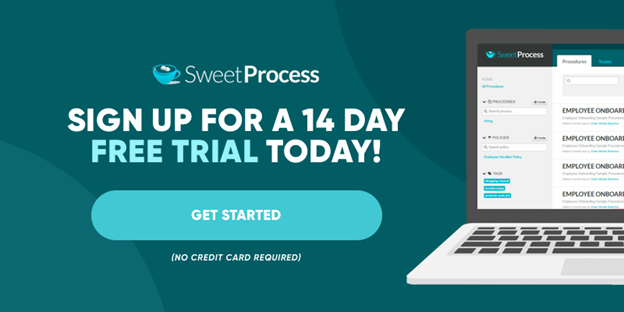Last Updated on November 19, 2024 by Owen McGab Enaohwo

Trainual helps small businesses onboard new employees and create processes and policies for them.
However, it has a steep learning curve, which makes it challenging for most new users to use it on their own effortlessly.
It’s also difficult to format the content and customize the platform to suit the specific needs of your employees and learners.
So, if you’re looking for the top Trainual alternatives and competitors that can serve you better, you’re in the right place.
In this post, we’ll review the seven alternatives to Trainual for onboarding new employees and team members.ta
We’ll also share the core features, pros, and cons of each of them.
Let’s get started.
SweetProcess is our tool, and we built it for teams that want to document their procedures, processes, and tasks in one place so they can focus on doing work that matters for their business growth. Sign up for a 14-day free trial to see how it works. No credit card is required.
Table of Contents
1. SweetProcess: The Best Trainual Alternative for Documenting Procedures and Processes
2. Lessonly by Seismic: The Best Trainual Alternative for Employee Training
3. TalentLMS: The Best Trainual Alternative for Online Learning
4. Process Street: The Best Trainual Alternative for Process Management
5. Academy Ocean: The Best Trainual Alternative for Corporate Training
6. Coassemble: The Best Trainual Alternative for Growing Teams’ Online Training
7. Guru: The Best Trainual Alternative for Building and Organizing a Company’s Wiki
Why Do Users Seek Other Alternatives to Trainual?

Wondering what the cons of Trainual are that makes users look for its alternatives? Here are some of them below:
Steep Learning Curve
Most users complain that Trainual is difficult to use. What this means is that if you onboard employees using Trainual, it might take time before they understand how to use it.
A business owner complained about how confusing it was for him and his team to set up the software. Another user also mentioned how difficult it was to get his employees up to speed with the software.
Lack of Interactive Features
If you intend to use Trainual as a learning management system, then you might find it difficult to make it interactive for your learners. This might not be the case if you use it as an SOP software only.
Here is another user mentioning that employees can’t leave feedback or ask questions after consuming the training material on the software. One user complained that his team misses this feature. Another user mentioned that employees can’t leave feedback or ask questions after consuming the training material on the software.
Difficult Formatting
Another downside of Trainual is that it’s difficult to format the font type and size when creating training content for your employees and learners. One user complained about how this makes it time-consuming for him to create a course using the software.
Another user also emphasized how difficult it is to format training content and videos on the platform.
Now that you know some of the downsides of using Trainual for onboarding employees, let’s proceed to highlight some of the top alternatives you can use instead.
7 Alternatives to Trainual for Training and Onboarding New Team Members

Below are the seven best Trainual alternatives for onboarding new employees.
Let’s get started.
1. SweetProcess: The Best Trainual Alternative for Documenting Procedures and Processes
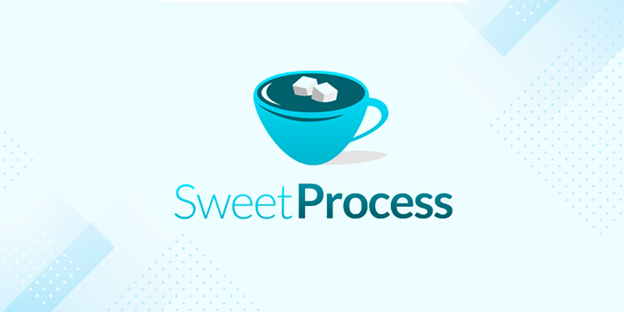
SweetProcess allows you to keep your processes, procedures, and tasks in one place so you can focus on growing your business. You can provide your team members with all the information they need to do their jobs correctly.
By using SweetProcess, your employees will exchange fewer emails, and there will be no more guesswork regarding how to do their jobs efficiently. This is because all repetitive tasks will be documented in one place.
If you’re looking for the best Trainual alternative for documenting your company’s procedures and processes, then SweetProcess is your best fit.
Below are some of the core features and benefits of using our platform.
Intuitive SOP software
SweetProcess makes it easy for the end-users and managers to get started fast.
Unlike Trainual and other alternatives that take you through an unending tour of how their platform works, you can log in to SweetProcess and start using it immediately.
Here’s what the dashboard looks like:

You can easily navigate the different tabs on your workspace to create documents, policies, procedures, and processes. Furthermore, you can also assign tasks to your teammates and build an internal and external knowledge base quickly and easily.
For instance, if you want to create documentation for your employees, all you need to do is click on the “Documents” tab and the “Add” button, as shown in the screenshot.

The same applies if you want to create procedures. Just click on the “Procedures” tab and the “Create Procedure” button, as shown in the screenshot below.

You can also create a process for your team by clicking on the “Processes” tab and the “Create Process” button, as shown in the screenshot below.

Finally, you can assign tasks to your teammates on SweetProcess.
To do this, click on the “Tasks” tab and then the “Assign Tasks” button, as shown in this screenshot.
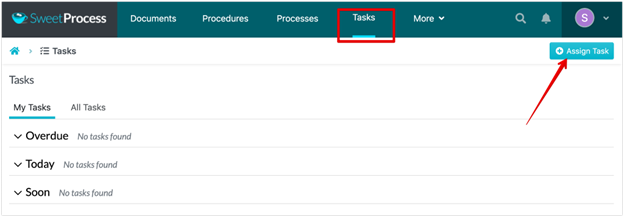
Joel Mizrahi, the director of operations at Network Doctor, mentioned how SweetProcess’s user-friendliness and ease of use convinced them to use the software.
“Having a business like ours where we wear multiple hats, we don’t have the time to take a two-week-long course to be able to figure out how to use a piece of software…. Just how user-friendly SweetProcess is was a great thing for us.”
As you can see, SweetProcess doesn’t have a steep learning curve. So even if you’ve never used our platform before, you can get started with little to no supervision.
Document the company’s procedures into processes quickly and easily
SweetProcess makes documenting a company’s procedures seamless. Unfortunately, most employee onboarding platforms do not support this feature. Using our platform, you can convert your company’s procedures into processes with a single click.
The first step to achieve this with SweetProcess is to create a set of procedures, as shown below:
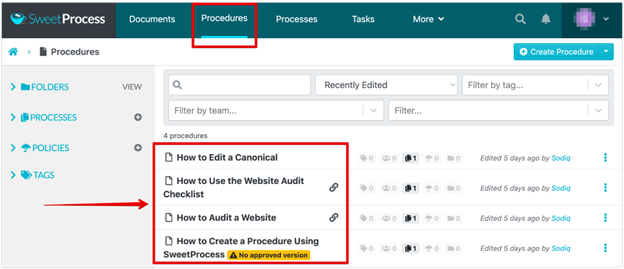
Once done, click on the “Create Process” button.
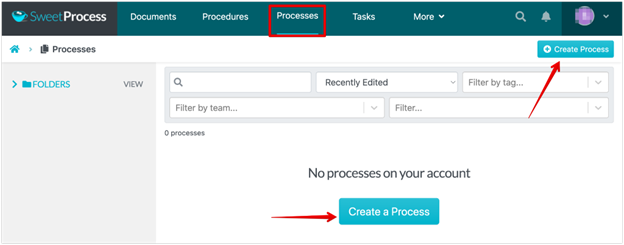
On the next page, you can name your process so your employees can access it later.
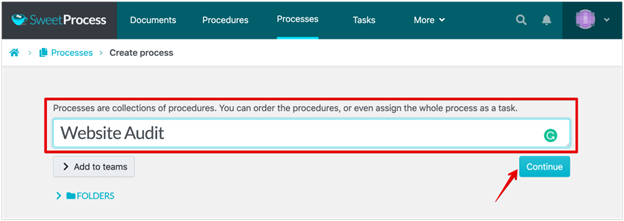
After naming the process, you can create or add existing procedures as steps in the process. To do this, click on “Add Step.”
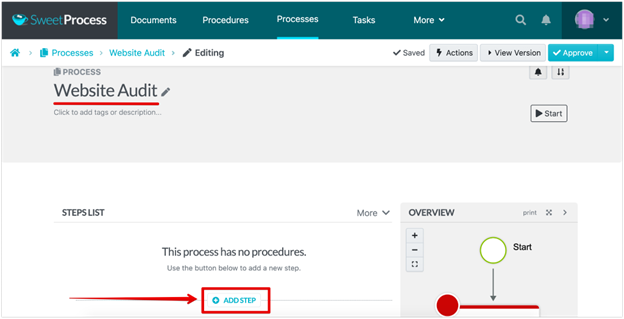
There are usually different steps in a process. To add a procedure as a step, select “Procedure” from the dropdown.
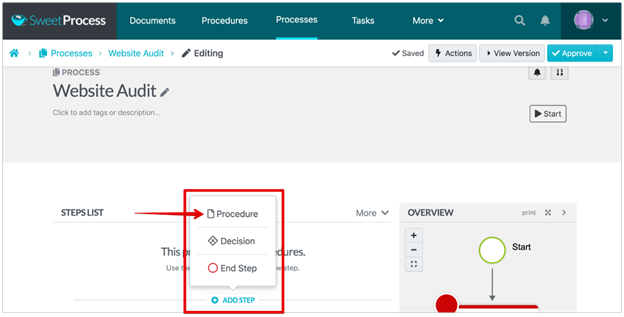
Once done, you can search for an existing procedure or create a new one. If you’ve created procedures before, you can select from them to add to the process.
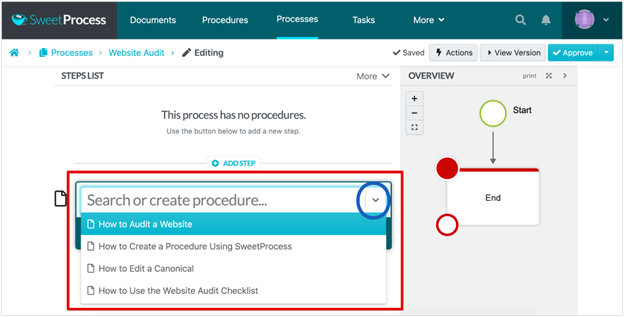
After selecting a procedure, it automatically adds it to the process, as shown below. If you’d like to add more procedures to it, click on the “+” sign.
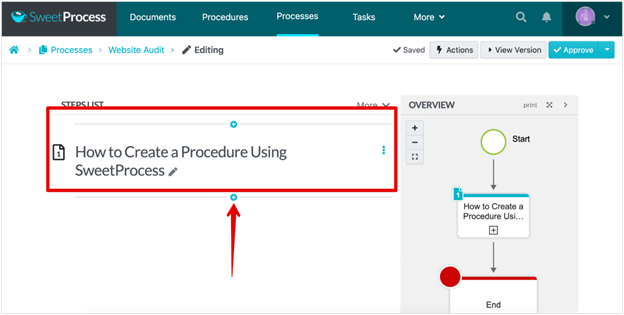
You can import an existing procedure into SweetProcess. This is useful if you’ve previously created procedures for your employees in Google Docs or Microsoft Word.
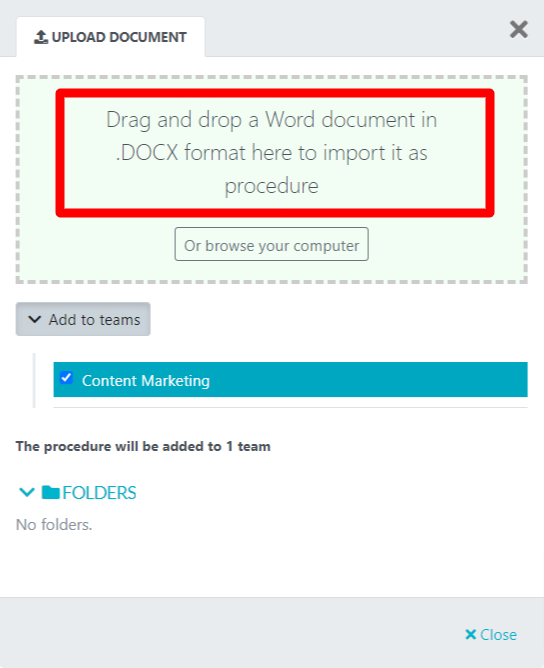
Ted Fogliani, CEO of ShipCalm, an e-commerce-focused logistics company, emphasized that the ease of creating procedures on SweetProcess was one of the reasons he chose the software over other competitors.
“I had been hunting for years for something that was easy to do, and the thing that got me attracted to SweetProcess was that writing revision one of the procedures is the easiest thing in the market. I’ve looked at them all. Writing revision one was the easiest thing to do with these guys.”
If you’re looking for a standard operating procedure software that makes it seamless to train your employees and gives them the confidence to perform their tasks efficiently, then SweetProcess is your best bet.
Flowchart/process map feature
SweetProcess is a process mapping software that automatically generates a flowchart diagram for the user to visualize what they are documenting. This creates a pictorial overview of what the procedure or process will look like in the end.
Let’s say you want to create a procedure for promoting each episode of your podcast.
Some of the steps in the procedure might include:
- Send an email broadcast
- Share on Facebook
- Share on Twitter
- Share on LinkedIn
- Add to CoSchedule
After creating this procedure on SweetProcess, it will automatically generate a flowchart that looks like this:

This ease of documentation and visual approach attracted Jamie Ramsden, a lean Six Sigma champion at Turkstra Lumber, to SweetProcess.
In his own words:
“The thing that caught my attention first was just something simple and visual, which is that SweetProcess automatically makes you a little flow chart as you enter your steps for any process. People understand things in different ways and a lot of our staff really like that if they can get a visual representation immediately.”
As you can see, by using our platform, you can pass the same message to your employees in different formats. That way, you will carry along employees who prefer images to text and vice versa.
Exporting procedures and processes
If you want to share a process or procedure with someone outside SweetProcess, you can export the document as PDF or Word format and share it with the person via email or other means.
Let’s say you hired a business process consultant to work on a project requiring them to know your company’s procedures and processes. Adding them to your workspace could mean giving out too much sensitive information. SweetProcess helps you in situations like this.
You can download the processes as a PDF or Word document with a single click. Alternatively, you can print the generated flow chart as an image, then send it to the subject matter expert via email.
Below is how to print the procedure overview as an image.
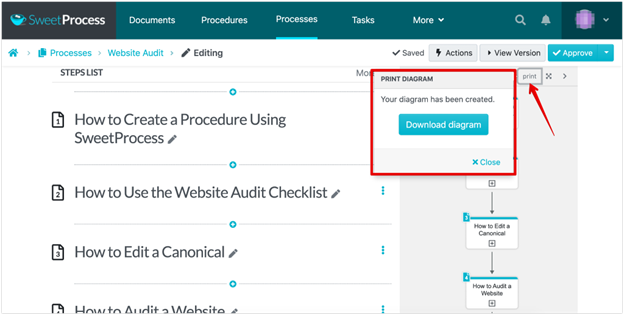
Build an internal and external knowledge base
A knowledge base software helps customers and employees to get information about companies and what they do. It’s essential for new hire onboarding, as it helps them get started fast on the job and saves the organization time, as they don’t need to ask old employees the same questions repeatedly.
Aside from employees, you can also create an external knowledge base for customers. This will help them learn about your products or services and get quick help on their own without speaking to a customer support representative.
Here’s how to create a knowledge base on SweetProcess.
First, click on the “More” dropdown menu from your SweetProcess dashboard. Then click on “Knowledge Bases,” as shown below.

Once you do so, it will redirect you to a new page. All you need to do here is click “Create Knowledge Base.”
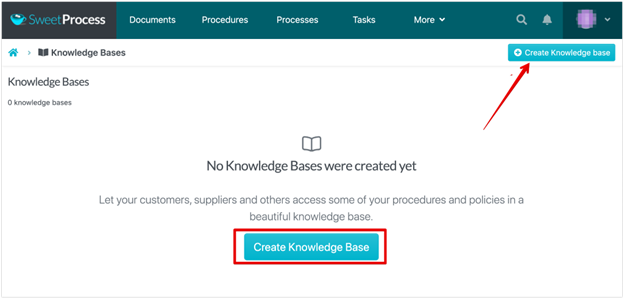
The next step is to give your knowledge base a title. Once done, click “Create,” and you can begin writing the knowledge base document.

Jacob Syrytsia, the CEO at AEJuice, shared how creating a centralized knowledge base for his team members improved his typical day.
“For every department, we have a separate knowledge base and there’s a manager for each department. Either the manager or I keep it up to date. Whenever someone asks ‘How do I use this tool?’ I just send them a link and it saves me about an hour of explaining.”
Employees appreciate having a go-to resource for any piece of information they require to complete their tasks. With a knowledge base, you save them the stress of not knowing what to do and chasing down other people for assistance.
Assign tasks to employees and monitor their progress
SweetProcess allows you to assign tasks to teammates and monitor their progress. That way, you can stay on the same page with them and ensure that the job is done accordingly.
Let’s say there is a specific procedure or process you want an employee to complete at a particular time. You can use SweetProcess to assign that task to them and monitor it.
Here is how it works.
From your SweetProcess dashboard, click on “Tasks.”

Once you do, you’ll be redirected to a new window. From there, click on the “Assign Task” button:

From the new window that pops up, you can assign tasks from existing procedures or processes to a teammate. You can also create a new procedure or process from scratch.
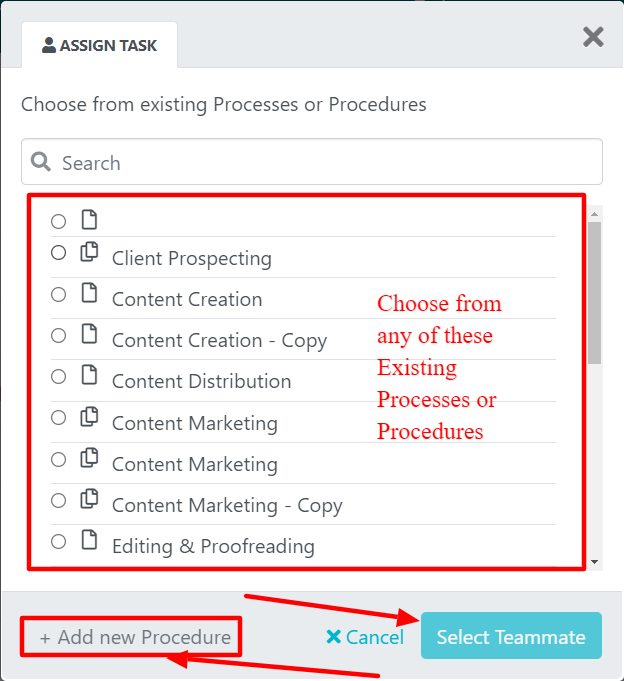
After choosing the procedure or process, the next step is to assign it to teammates. Finally, you can specify the start and due dates for the person or team performing the task.
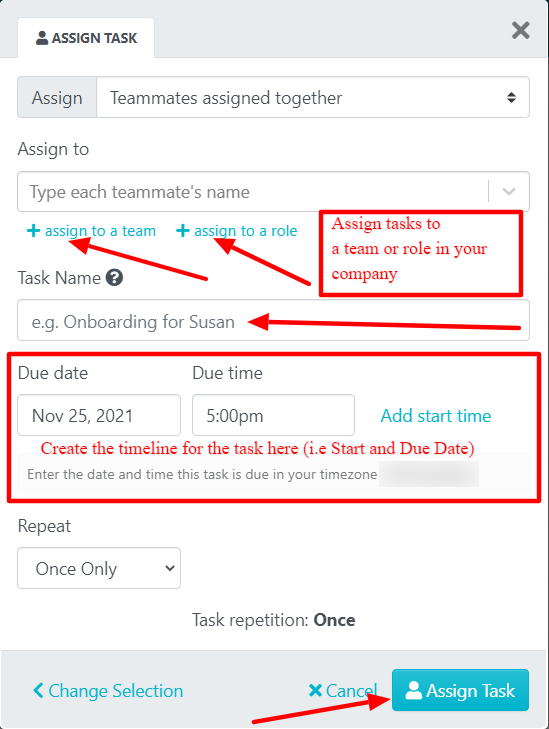
Once this final step is completed, the employee or team in the company will be notified of the assigned task. You can also see a list of your assigned tasks in the dashboard.
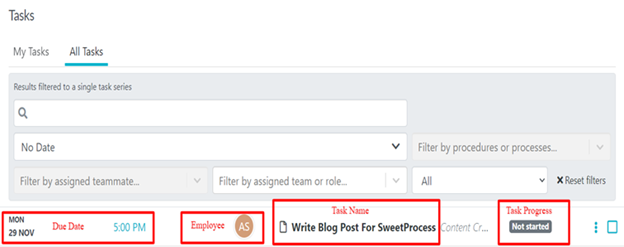
Manny Cosme, president and CEO of CFO Services Group, a management accounting firm, uses SweetProcess to delegate tasks and provide team members with the specific information they need.
That way, he can control team members’ information, especially when it’s confidential.
Here is what he has to say about this feature on our platform:
“Being able to give people specific access to certain information was not only helpful to them, but also to me as a business owner to protect my proprietary information. No one has access to the piece of the puzzle other than me.”
As you can see, assigning tasks to your employees and teams on SweetProcess is seamless.
Supports version history
Knowing who initiates a particular change or deletes a document is essential for accountability. This helps minimize conflicts in the team.
With SweetProcess, team members can track and see changes to the policies, procedures, and processes. They can also see who did so and when it was last changed.
The screenshot below is an example of the version history for one of the procedures of our content marketing team.
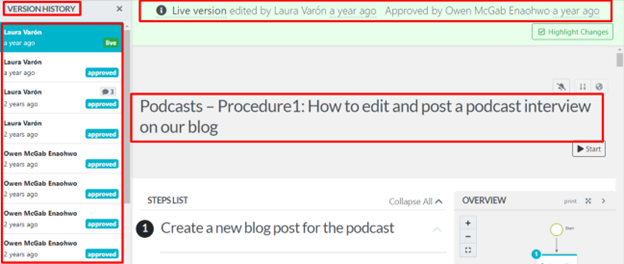
As you can see, it highlights the different versions of the procedure in the last three years, plus the specific team members who made those changes and approved them.
SweetProcess Pricing: How Much Does SweetProcess Cost?
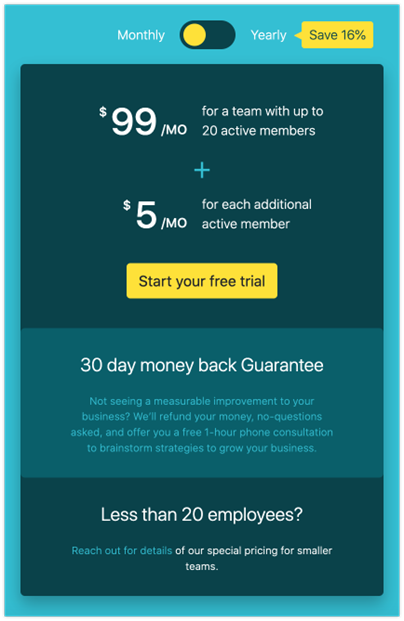
SweetProcess has a straightforward pricing model. It costs $99/month for a team with up to 20 active members and charges $5/month for each additional active member.
With this plan, you can access all SweetProcess features we’ve mentioned so far, such as creating documentation, procedures, processes, and policies. You can also assign a task to team members, build a knowledge base, and export procedures and processes.
You can get started with a 14-day free trial to see how everything works and cancel at any time (no credit card required).
2. Lessonly by Seismic: The Best Trainual Alternative for Employee Training

Lessonly by Seismic is a simple learning management system that assists teams in learning, practicing, and performing better work. It has an easy-to-use lesson-building module that anyone can use to create training content.
It also allows teams to measure training success and track learner satisfaction, completion, and other vital data.
Pros of Lessonly
- Super-easy interface for the admin and learner: Lessonly provides an easy interface for the admin and learner so they can navigate the platform without requiring additional knowledge.
- Track learning outcomes by an employee: When employees set up a learning asset on Lessonly, the platform allows the admin or employee to track the individual learning progress and outcomes of learners. This is important for them to know if an employee has taken the course or not.
- Acts as a great searchable resource to look back at for information: Looking for procedures to carry out a task can be very demanding. However, with Lessonly, users can access search from a repository of information for a guide and refer back to it anytime they need it.
- Community support (LlamaNation): Lessonly also has a community support group where users from around the world share their experience with the tool to help others use it better. Members can also access resources, swag, prizes, and exclusive events.
Cons of Lessonly
- Not suitable for building procedures and processes: Lessonly is a learning tool. It’s not ideal for building documentation, procedures, and processes, which are essential for organization growth and operational success.
- Inability to drag elements from one section of a lesson into another: Lessonly does not allow users to drag elements from one section to another. As a result, you can only create each section from scratch, which is time-consuming and repetitive.
- Customization and branding are limited: It doesn’t allow you to customize as much as you want. Hence, your brand can’t be visible on the Lessonly interface.
Lessonly Pricing: How Much Does It Cost?

Lessonly pricing isn’t public. Instead, they request prospective customers to book a call with their sales team to access it.
3. TalentLMS: The Best Trainual Alternative for Online Learning

TalentLMS is a cloud-based learning management system for businesses of all sizes. It has an intuitive interface that makes training feel right with easy access on any device.
Pros of TalentLMS
- Supports various content formats to give you flexibility in your training: TalentLMS allows the user to create training in text, audio, or video format. This brings about flexibility for the employer and employees.
- Supports gamification badges: To motivate learners, TalentLMS supports gamification badges to promote continuous learning. This isn’t only to make learning fun, or for employees to compete with each other, it’s also to give them a sense of achievement and rewards.
- Localization of training to employee’s language: It also allows for multiple languages so trainers can create training content in languages of their choice.
- Includes the branches feature: TalentLMS has the branch feature, allowing multiple site setups for large training groups.
Cons of TalentLMS
- Not suitable for building a company’s procedures and processes: Like Lessonly, TalentLMS is an employee training platform. Instructional designers mostly use it to create learning content. It can’t be used to develop company-specific procedures and processes.
- Frequent bugs and glitches: It has frequent bugs and glitches, making it annoying to use.
TalentLMS Pricing: How Much Does It Cost?
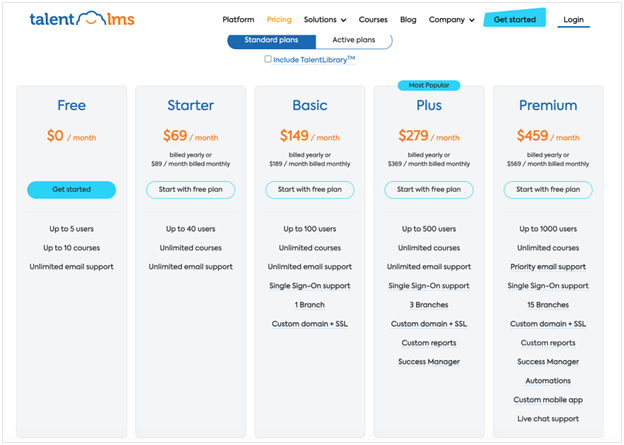
TalentLMS has five pricing plans. The free plan gives access to up to five users to create ten courses and unlimited email support.
The starter plan costs $69/month. With this plan, you can create unlimited courses and get unlimited email support. Plus, 40 users can access your training platform.
The basic plan costs $149/month. This plan has everything in the starter plan and allows 100 users to access your training platform. Plus, you have access to single sign-on support, custom domain, and SSL.
The plus plan is $279/month and accommodates up to 500 users simultaneously. Aside from everything in the basic plan, you’ll also have access to custom reports and a customer success manager.
The premium plan costs $459/month. With this, 1,000 users can access your training platform. Aside from getting access to everything in the plus plan, you’ll also get automation, a custom mobile app, and live chat support.
4. Process Street: The Best Trainual Alternative for Process Management
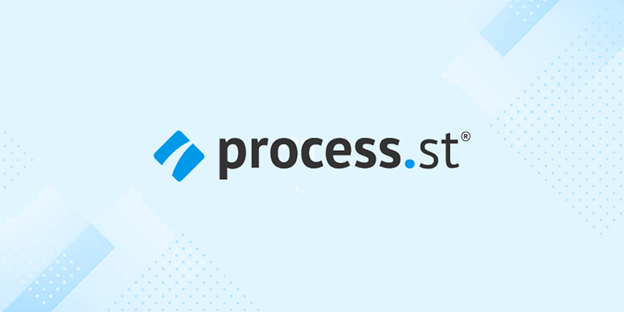
Process Street is a software for managing your team’s recurring checklists and procedures. It is a modern team process management platform that allows teams to share their core processes, which are transformed into powerful no-code workflows.
If you’re looking for the best Trainual alternative for process management, consider using Process Street.
Pros of Process Street
- Ability to define processes, assign them to team members, and track progress: Like SweetProcess, Process Street allows you to define your workflow processes seamlessly. It provides easy-to-use tools to create these processes, assign them to your team members, and track their work progress. This means that if you ask a team member to read through a document in preparation for a task, you can spot if they went through it or not.
- Supports sending reminders to employees to ensure that nothing falls through the cracks: Process Street notifies you of the milestones you or your teammates achieved. In addition, it automatically sends reminders to inform you about the stage at which a job is so that employees can avoid job delivery oversight.
- Allows setting up complex multi-user/multi-department checklists: For example, if five professionals are to work on a particular task, it allows them to set up multiple users or multi-departmental checklists for their individual teams.
- Helps you manage recurring workflows for your team: Let’s say your team must audit the website they are working on daily. With Process Street, you can manage the recurring workflow to ensure that all concerned teammates get the reminder daily.
Cons of Process Street
- Could be intimidating and complicated to use for a beginner: Unlike SweetProcess, it can be very hard to find your way around Process Street, especially as a first-time user.
- Inability to move tasks from one workflow to another: If there’s a particular task in a procedure and you want to move it to another, Process Street doesn’t allow you to do that. Instead, you have to go to the other procedure to create that task. It also doesn’t allow you to copy and paste tasks from one point to another.
Process Street Pricing: How Much Does It Cost?
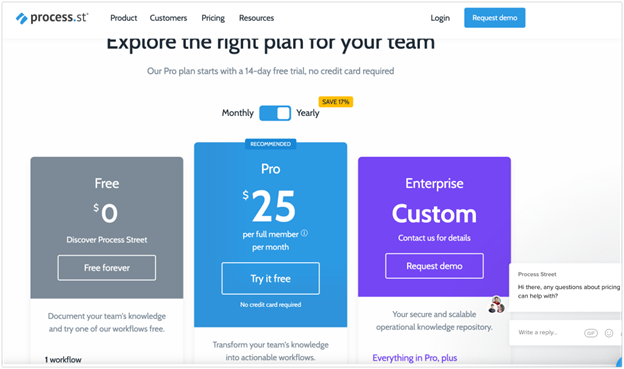
Process Street has a free plan that you can use forever. This plan allows you to create one active workflow and add unlimited members.
The pro plan costs $25/month and allows you to create an unlimited workflow, workflow runs, pages, task permissions, role assignments, conditional logic, etc.
The final pricing is the enterprise plan. This depends on your preferred customization. With it, you get access to everything in the pro plan and more.
5. AcademyOcean: The Best Trainual Alternative for Corporate Training

AcademyOcean allows you to automate training and manage remote teams effectively. With it, you can prepare a training program in just minutes. You can also brand and customize the interface text and create quizzes and polls.
Pros of AcademyOcean
- Smooth UI/UX for both admin user and end-user: It’s flexible, making adding new learners or customizing easy.
- Large number of customization tools: AcademyOcean has many tools that allow you to brand and customize your training program. For example, it has a customization tool that will enable you to create personalized content for each of your learners.
- Great for onboarding new customers and clients: It allows managers to teach current and potential customers how to use their product. This is important because customers prefer an easy tool, and when they find it challenging to use a product, they look for alternatives.
- Multi-language platform: It has a multilingual tool that lets you customize your academy interface according to the needs of your audience. This serves individual customers based on their language preference and knowledge needs.
- Supports a mobile-friendly interface: AcademyOcean is accessible on any device. The mobile-friendly interface allows the users to enjoy a unique system to access, create, manage, and synchronize content.
Cons of AcademyOcean
- The text editor can bug: When creating content on AcademyOcean, the text editor bugs. It goes on and off and then restarts itself.
- Doesn’t support sophisticated landing-page builders: AcademyOcean isn’t capable of creating appealing landing pages, making program enrollment difficult.
- Doesn’t support webhooks integration function: Webhooks are important integrations that let the admin get requests from users based on their activities on the platforms. This makes it easy to fix errors and creates a better experience. However, AcademyOcean does not support this.
AcademyOcean Pricing: How Much Does It Cost?
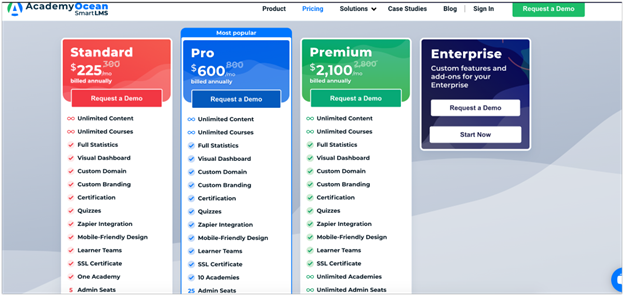
AcademyOcean has four pricing plans.
The standard package costs $225/month. It allows the user access to one academy, five admin seats, and up to 1,000 learners. In addition, it provides unlimited content, courses, full statistics, a visual dashboard, custom domain, custom branding, certification, quizzes, and Zapier integration.
The pro package costs $600/month. This allows users to create ten academies, 25 admin seats, and have up to 1,000 learners. Aside from the features included in the standard package, the user will also have access to smart teams, multilingual portals, and customizable interfaces.
The premium package costs $2,100/month, allowing users to create unlimited academies, unlimited admin seats, and up to 5,000 learners. In addition to the features in the pro package, the user will have access to learner teams, multilingual portals, content variables, and dynamic content.
For the enterprise package, you’ll need to reach out to their sales team for customization and pricing.
6. Coassemble: The Best Trainual Alternative for Growing Teams’ Online Training
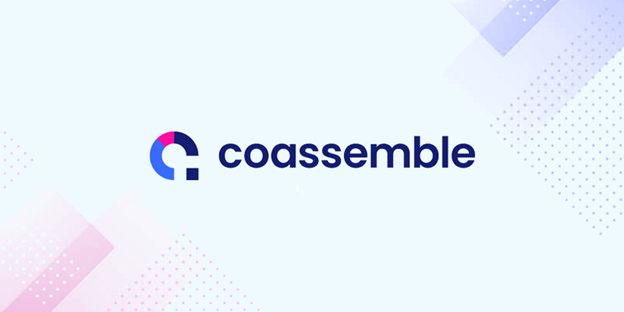
Coassemble is a software built for growing teams and businesses looking for their first online training platform. It allows users to create high-quality training experiences that drive business impact.
Pros of Coassemble
- Easy-to-use interactive screen templates: Coassemble has easy-to-use interactive screen templates. These templates have JavaScript functionalities embedded in them so that when you click or hover on a concept, it displays the details, thereby allowing users to grasp concepts without much navigation.
- Supports interactive learning process: The interactive screen makes learning interactive by holding employees’ attention and allowing them to retain the information they are learning effortlessly.
- The learning curve is reasonable: Like SweetProcess, Coassemble is intuitive and doesn’t require you to go through a series of tutorials before using it.
- Supports the SCORM file option: SCORM file is a package interchange file (PIF) that contains all the data needed to transfer learning content to an LMS. Moving old courses from previously created files on other platforms to Coassemble is easy.
- Makes it easy to celebrate employees’ training achievements: Coassemble also allows you to celebrate employees’ training achievements which is an excellent way to motivate them to learn more.
Cons of Coassemble
- Inability to publish individual changes: It’s impossible to make slight changes on Coassemble. Rather, you’ll have to publish that particular section again. This process delays publication and wastes time.
- It can be a bit glitchy sometimes: The platform is sometimes affected by bugs and glitches.
- Not ideal for bigger companies: The platform cannot host bigger companies with large learning and development teams creating lots of programs.
Coassemble Pricing: How Much Does It Cost?

Coassemble has three pricing models: Pro 10, Pro 20, and Premium 20.
The Pro 10 plan costs $50/month and allows up to 10 users. It also gives full access to unlimited course creation, learning resources, support, and one-on-one training sessions.
The Pro 20 plan costs $120/month and allows up to 20 users. In addition to the features in the Pro 10 plan, users can share, analyze, and manage the entire process.
The Premium 20 plan costs $160/month and allows up to 20 users. Aside from the features in the Pro 20 plan, users can customize their dashboards and integrate other third-party tools.
7. Guru: The Best Trainual Alternative for Building and Organizing a Company’s Wiki

Guru works in your company’s existing workflow by providing you with the information you need to do your job fast. With it, you can organize your company information and access it from anywhere.
It also has knowledge alerts to keep your team up on current and real-time releases and updates.
Pros of Guru
- Makes it easy for everyone to find information in a systematic and accurate method: It has a proper approach to help you better find information.
- Has a Chrome extension which makes it super easy to access the card information: With this, you don’t always need to visit the platform before making changes. You can do so directly from your browser.
- Ease of use and navigation: Its user experience is well designed and provides absolute flexibility and navigation for users.
- Amazing software to learn and grow at the workplace: It’s an excellent learning tool that helps users grow within their organization.
- Supports Slack and Microsoft Teams integrations: This makes it easy for teams across your company to stay aligned whenever and wherever they’re working.
Cons of Guru
- The formatting when creating or editing the cards isn’t stable: Creating or editing cards is difficult. This is because you’ll first head over to the formatting scheme before entering the text editor and then highlight the desired text area before you’re able to change anything. That process is too long for a simple task such as editing a card.
- Inability of an admin to view other users’ perspectives: As a learning platform, it should allow the admin to view learners’ progress, but it doesn’t, which is a major downside.
- Teams must create their templates from scratch: Guru software does not have ready-made templates. Every user has to create their cards and templates from scratch.
Guru Pricing: How Much Does It Cost?
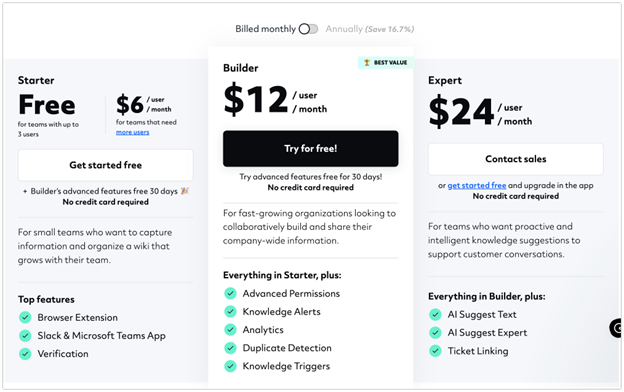
Guru has three pricing plans.
The free or starter plan allows teams with up to three users; $6 per month for each additional user. Users can access browser extension, Slack and Microsoft Teams integration, and verification on this plan.
The builder plan costs $12/month for each user and allows them to create advanced permissions, knowledge alerts, analytics, duplicate detection, and knowledge triggers.
The expert plan costs $24/month. It provides everything in the builder plan plus AI Suggest Text, AI Suggest Expert, and Ticket Linking.
Here’s how Guru Compares to similar tools in managing your company’s wiki
Which Trainual Alternative is Best For Onboarding New Employees?

In this post, you’ve learned about the seven best Trainual alternatives for onboarding new employees.
We showed you how Trainual compares to Lessonly, TalentLMS, Process Street, AcademyOcean, Coassemble, Guru, and SweetProcess.
The best Trainual alternative for your organization depends mainly on your needs.
If your goal for seeking a Trainual alternative is to build and organize your company’s wiki, then Guru is a good fit for you.
If you’re looking for a Trainual alternative for specifically hosting employee training, then you should consider Lessonly, TalentLMS, AcademyOcean, and Coassemble.
If you’re hunting for a Trainual alternative for process management, then Process Street is good for that purpose.
However, if you prefer a Trainual alternative that helps you achieve all these and makes it easy to document your company’s procedures and processes, in that case, SweetProcess is the best fit for you.
With SweetProcess, you have access to features that makes employees’ onboarding seamless such as:
- Creating documentation, procedures, processes, and policies.
- Embedding files and videos.
- Assign and track employees’ tasks.
- Exporting documents offline.
- Editing images and screenshots.
- Collaborating with your team members in real-time.
- Building an internal and external knowledge base.
Want to see the tool in action and build your company’s first procedure? Get started today by signing up for a 14-day free trial. No credit card required.
